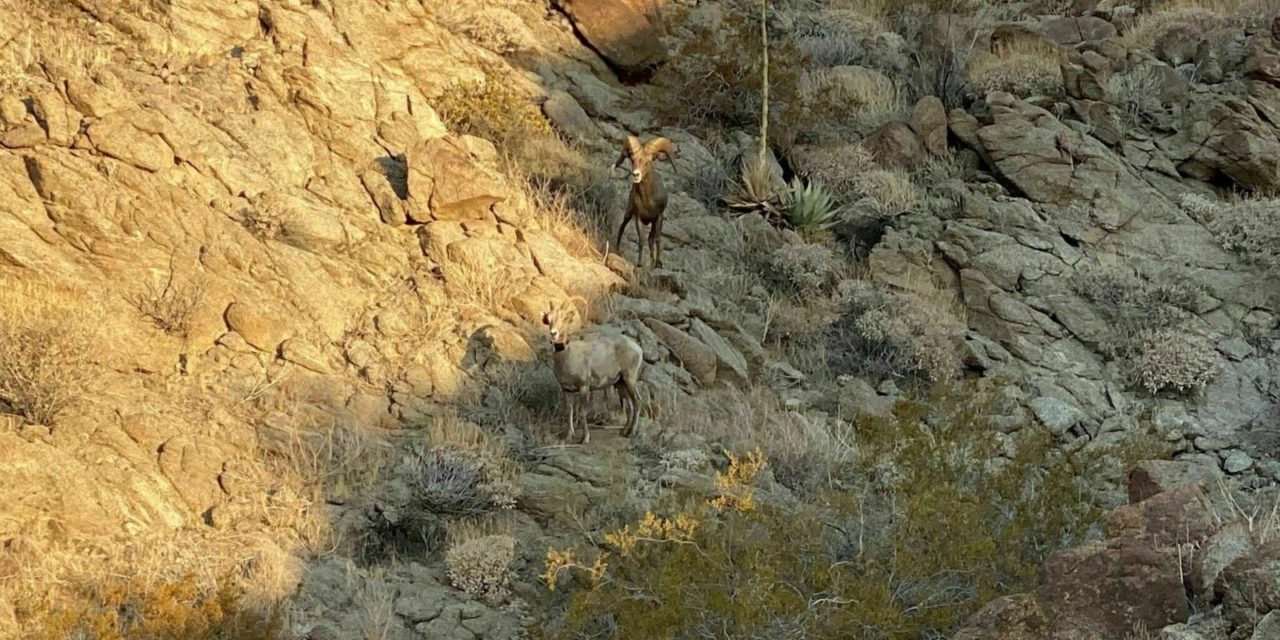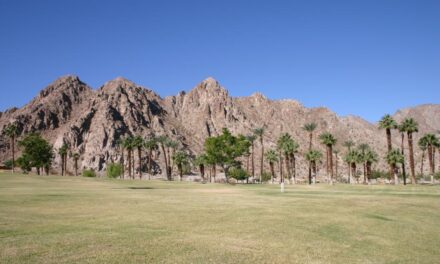Do not wait to hike Dead Indian Canyon Trail before it closes
Day hikers can hike to a small oasis in the foothills above Palm Desert on the Dead Indian Canyon Trail.
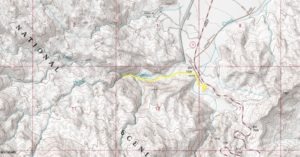
Dead Indian Canyon Trail topo map
Running 2.3 miles round trip, the trail is fairly straight and gains less than 300 feet elevation. It does close at times, usually Jan. 1 to Sept. 30, when bighorn sheep inhabit the area. So you’ll want to get in a hike there within the next couple of weeks or you’ll have to wait until next fall.
To reach the trailhead, from Calif. Hwy. 111 in Palm Desert, take Calif. Hwy. 74 south into the mountains. After passing the Santa Rosa & San Jacinto Mountains National Monument Visitor Center, a parking lot for the Art Smith Trail will be on the right/west. Form the lot, head northwest and round the edge of the ridge into a sandy wash.
The trail heads west from there. There is a gate to the canyon – if it’s open, feel free to enter; if it’s closed, then bighorn sheep likely have lambs in the area, and you’ll want to hike a different trail.
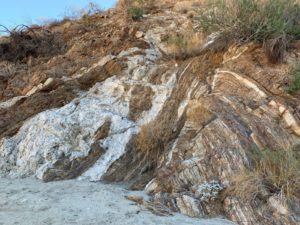
Fascinating rock formations line much of the Canyon.
Once the canyon narrows, interesting rock formations appear. Sometimes you can spot bighorn sheep on them. You’re certain to see harmless collared lizards resting on and darting between the rocks.
The canyon was formed by Dead Indian Creek carrying rainfall and snowmelt from the higher elevations in the foothills. The canyon, though, can go dry for years.
Though fairly barren, the canyon still boasts flora, including a couple of interesting plants amid the desert scrub.
One of them is desert mistletoe, which lives throughout the Mojave and Sonora deserts at elevations of up to 1400 feet. The end of the trail marks about the highest you’ll find this plant in these foothills
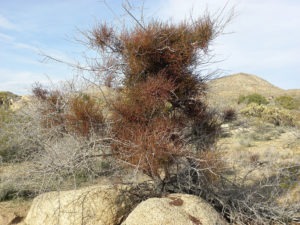
Desert mistletoe has no leaves so connects itself to other plants to obtain water and minerals.
Bearing no leaves, mistletoe attaches itself to woody plants – such as mesquite, ironwood, acacia, palo verde, and desert buckthorn – then pulls water and minerals from its host. During winter, look for its modest though fragrant flower. It grows berries that range from red to translucent; flycatchers eat this fruit and spread the plant’s seeds, which they can’t digest.
Another interesting plant is coyote brush, which bears small gourds. Boasting large leaves and spreading vines, its taproots can spread several feet into the ground. It bears large, bell-shaped flowers.
December is a good time to spot the bush’s striped gourd. It’s not edible (though coyotes allegedly enjoy them), but Native Americans used them to make soap and did grind the seed for food.
Near the end of the trail, where Grapevine Creek spills into the canyon from the south, you’ll have to scrabble over large boulders. The effort is worth it, though, as you’ll reach a small oasis of California fan palms where Ebbens Creek joins the canyon.
That oasis probably was the reason the canyon got is name. According to legend, when Euro-Americans arrived in the area, some visited the canyon at night and heard strange sounds. They claimed an Indian spirit made them. Dry palm fronds rubbing against one another in the night breeze probably created the sounds, however.
Because the trail is quite rocky, you’ll want to wear quality hiking boots to protect your feet and to ensure you have good traction. The canyon walls can cast shadows over the trail, but it otherwise is open to the sun, so always don sunscreen, sunglasses and sunhat when on it.
Image Sources
- Fascinating rock formations line much of the Canyon.: Rob Bignell
- Desert mistletoe: Rob Bignell
- Bighorn sheep: Rob Biignell

